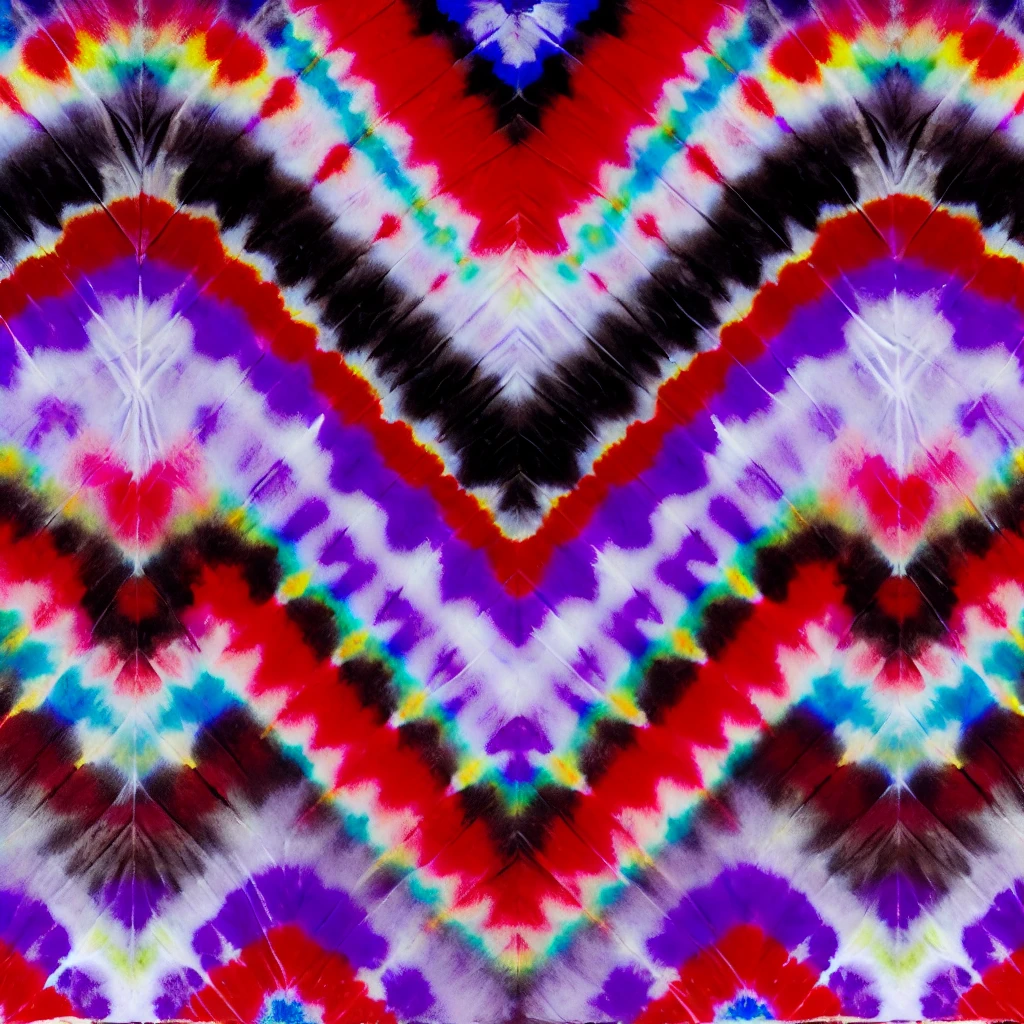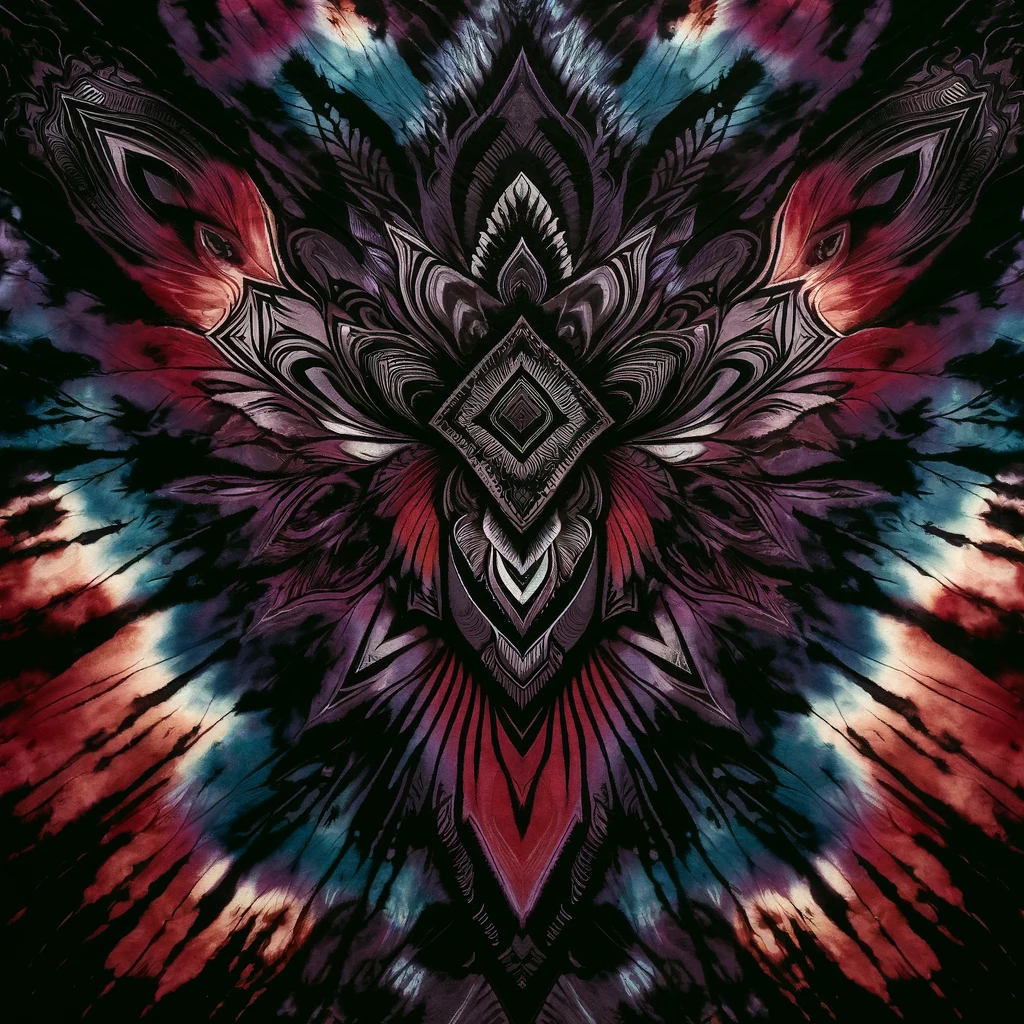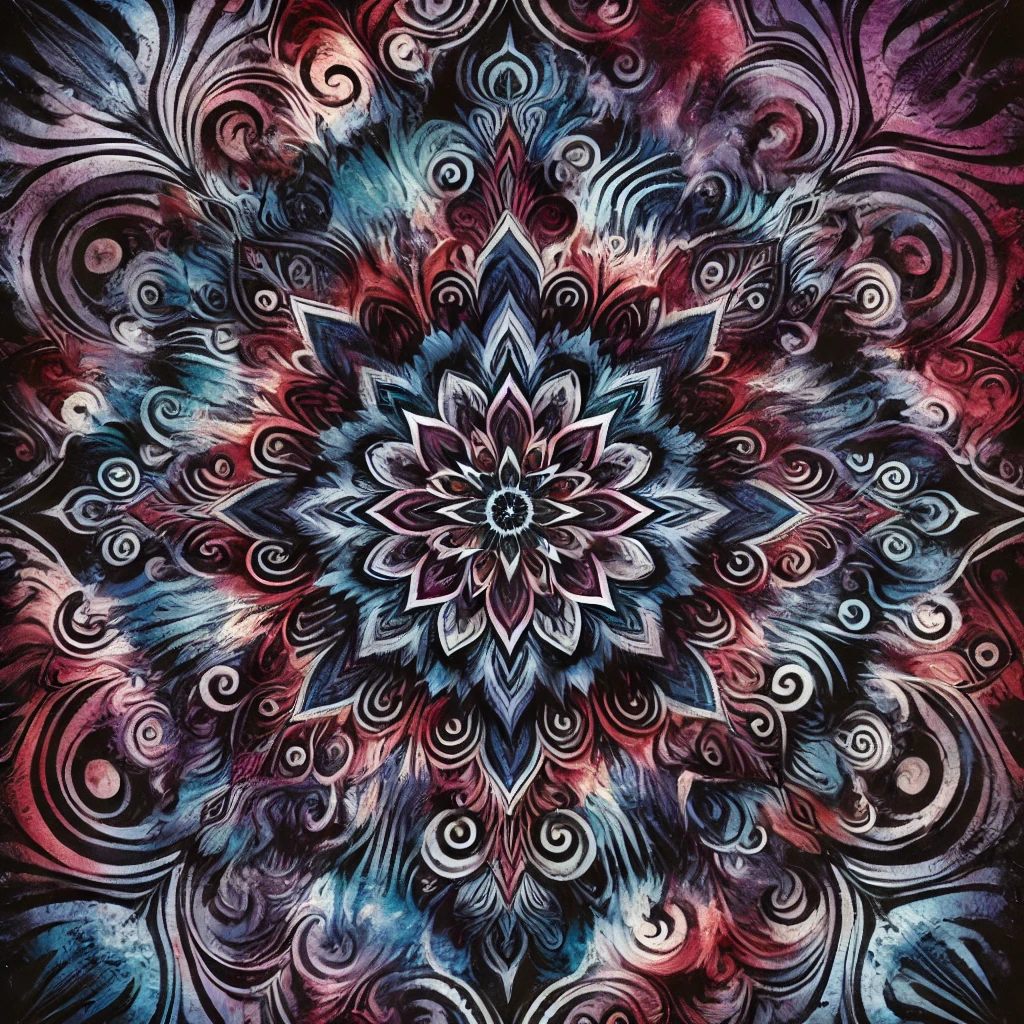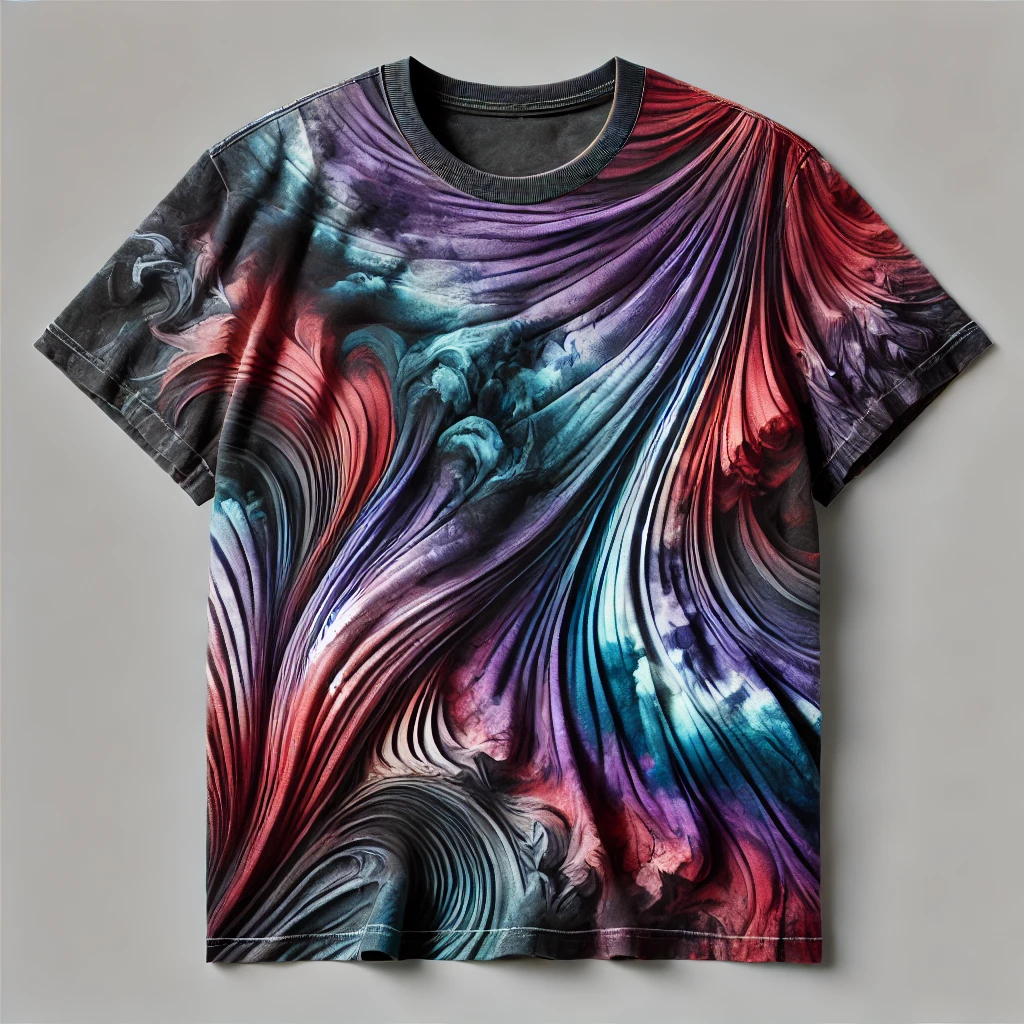Table of Contents
The Timeless Art of Tie Dye
Tie dye is a vibrant and expressive art form that has captivated people globally for centuries. This creative technique involves twisting, folding, and tying fabric in specific ways before applying dye, resulting in mesmerizing patterns and an array of colors that are as unique as the individual wearing them. While many associate tie dye with the counterculture movements of the 1960s and 70s, where it became a symbol of individuality and freedom, the practice has much deeper roots. Long before its modern resurgence, ancient cultures around the world utilized similar methods to create intricate and symbolic designs, embedding the art form with rich cultural significance that has endured through the ages.
Ancient Origins and Cultural Significance
Long before tie dye became a fashion trend, ancient civilizations practiced fabric dyeing techniques similar to those we see today. In India, the art of resist dyeing, known as “bandhani,” has been around for over 5,000 years, involving the tying of fabric sections to create intricate patterns. In Japan, the “shibori” technique, originating in the 8th century, used folding, twisting, and binding methods to produce detailed designs. These practices were more than decorative—they held deep cultural and symbolic significance, often used in religious ceremonies and as markers of social status. The rich history and cultural roots of these early dyeing methods paved the way for tie dye’s global popularity and lasting appeal.
Ancient Origins of Tie Dye
The art of tie dye can be traced back thousands of years, with its origins deeply rooted in ancient civilizations such as those in India, Japan, and Africa. In India, the practice of resist dyeing, known as “bandhani,” has been employed for over 5,000 years. This technique involves tying small sections of fabric with thread to prevent the dye from reaching certain areas, resulting in intricate patterns. These designs are not only visually stunning but also carry significant cultural meanings, often used in religious ceremonies and traditional clothing. Bandhani has been passed down through generations, preserving its importance in Indian culture and continuing to be a symbol of heritage and identity.

Shibori and Adire: Cultural Significance in Japan and Africa
In Japan, the “shibori” technique, dating back to the 8th century, involves carefully folding, twisting, and binding fabric before dyeing, creating highly detailed and unique patterns. These designs, often seen on traditional kimonos, hold symbolic meanings, reflecting nature or spiritual beliefs. In West Africa, particularly among the Yoruba people, the art of tie dyeing is known as “adire.” This method has been practiced for centuries, using indigo dyes to create striking garments rich in symbolism. Adire patterns often represent social status, cultural identity, or specific events. Both shibori and adire showcase the deep cultural significance and historical importance of tie dye across different civilizations.
The Global Spread of Tie Dye Techniques
As cultures began to interact and trade, fabric dyeing techniques spread across the globe, significantly influencing textile practices in many regions. In Southeast Asia, these methods were adapted and integrated into local traditions, resulting in unique variations that reflected the region’s aesthetic preferences and resources. For example, in Indonesia, the batik process evolved to incorporate elements of these dyeing techniques, creating intricate patterns that became a staple of the region’s textile art. These adaptations allowed dyeing methods to blend seamlessly with existing cultural practices, enriching the textile traditions of the area while preserving their distinctive characteristics.
Tie Dye’s Influence in the Americas
The practice of tie dye also spread to Central and South America, where indigenous cultures developed their own distinct methods of fabric dyeing. In these regions, the basic principles of tie dye were adapted to suit local materials and cultural aesthetics. For instance, the Mayans and other indigenous groups in Central America used natural dyes from local plants and minerals to create vibrant, symbolic patterns on their fabrics. In South America, similar techniques were employed to produce colorful textiles that played important roles in both daily life and ceremonial practices. As tie dye continued to evolve across these diverse cultures, it resulted in a rich tapestry of techniques and styles that are still celebrated and practiced today.
Exploring Various Tie Dye Techniques
Tie dye offers a wide range of techniques, each producing distinct patterns and effects that contribute to the art’s vibrant diversity. One of the most popular methods is the spiral technique, where the fabric is twisted into a tight spiral and dye is applied in sections. This creates a swirling, hypnotic pattern that is instantly recognizable. Another widely used method is the crumple technique, which involves scrunching the fabric into a loose ball before applying dye. The result is a random, marbled effect that appears organic and dynamic, giving each piece a unique, unpredictable look.
Advanced Tie Dye Methods
Beyond the basics, there are more advanced tie dye methods that allow for even greater creativity. The stripe technique, for instance, involves folding the fabric into pleats and applying dye in horizontal or vertical bands, resulting in bold, linear patterns that stand out. Another innovative approach is “ice dyeing,” where ice is placed on top of the fabric before the dye is applied. As the ice melts, it blends the colors in unexpected ways, creating soft, watercolor-like patterns that are both subtle and striking. These advanced techniques showcase the versatility of tie dye and allow artists to experiment with new and exciting effects, further expanding the possibilities of this timeless art form.
The Role of Dyes in Tie Dyeing
The choice of dye is critical to the final appearance of a tie dye project, with the history of dyeing deeply rooted in natural sources. Traditionally, natural dyes derived from plants, insects, and minerals were the primary materials used. Indigo, one of the oldest known dyes, has been especially valued for its deep blue color and was a staple in many ancient dyeing practices, particularly in Africa and Asia. Similarly, madder root, known for producing a rich red hue, and turmeric, yielding a vibrant yellow, were commonly used across different cultures. These natural dyes were not only used for their colors but also for their cultural significance, often symbolizing different aspects of life and tradition.
The Rise of Synthetic Dyes in Modern Tie Dyeing
In modern tie dyeing, the use of synthetic dyes has become increasingly popular, offering a new range of possibilities for color and design. Fiber-reactive dyes, in particular, have gained widespread use due to their ability to chemically bond with the fabric, creating vibrant, long-lasting colors that resist fading, even after multiple washes. These dyes offer a level of durability and brightness that surpasses many natural dyes, allowing for more intense and varied color palettes. The shift to synthetic dyes has expanded the creative potential of tie dye, making it easier for artists and hobbyists to achieve consistent, vivid results while experimenting with a broader spectrum of hues.
Cultural Significance of Tie Dye Around the World

Tie Dye in African Culture: The Art of Adire
Tie dye has been embraced by various cultures around the world, each infusing the art form with unique styles and meanings. In Africa, particularly among the Yoruba people of Nigeria, tie dye is known as “adire.” This traditional textile art is used to create ceremonial clothing, with patterns that are not only visually striking but also rich in symbolic meaning. The intricate designs in adire often represent aspects of the wearer’s identity, social status, or community affiliation. These patterns are deeply embedded in cultural practices, making adire a significant art form that continues to be revered and practiced today.
Shibori and Bandhani: Cultural Significance in Japan and India
In Japan, the shibori technique has been used for centuries to create kimonos and other garments. Each pattern in shibori holds specific symbolic value, often reflecting virtues, elements of nature, or spiritual beliefs. This method is not just a craft but an integral part of Japanese cultural heritage, with patterns passed down through generations. Similarly, in India, the bandhani technique goes beyond mere decoration. Often used in wedding attire and religious ceremonies, bandhani holds deep cultural significance. The patterns and colors in bandhani are symbolic, representing various aspects of life, such as prosperity, fertility, and good fortune. Both shibori and bandhani highlight how tie dye techniques are deeply woven into the cultural and spiritual fabric of these societies.
Cultural Evolution of Dyeing Techniques
As the art of fabric dyeing spread across the world, it naturally evolved to reflect the values and aesthetics of the cultures that embraced it. In many regions, specific colors and patterns became deeply intertwined with social status, spiritual beliefs, or communal identity. For instance, in West Africa, certain patterns are traditionally reserved for royalty or employed in rituals, symbolizing power and reverence. Meanwhile, in Japan, shibori techniques were often passed down through generations, with each family or village developing its own distinctive style. These techniques, rich in cultural significance, became more than just decorative art—they evolved into important symbols of cultural heritage.
The Enduring Legacy of Traditional Dyeing
The cultural evolution of fabric dyeing has ensured its survival and relevance through the ages, transforming it into a cherished art form that serves as both a reflection of cultural heritage and a medium of individual expression. In many societies, these dyeing practices have been preserved and continue to be celebrated for their historical and cultural importance. The patterns and techniques developed over centuries have become integral to the identities of the communities that created them. As these methods continue to be practiced and adapted, they remain a powerful link to the past, while also allowing for new forms of creativity and self-expression in the modern world.

Tie Dye’s Resurgence in the 1960s and 70s
In the modern era, fabric dyeing techniques, particularly tie dye, experienced a significant resurgence during the 1960s and 70s, becoming a powerful symbol of the counterculture movement. The bright, psychedelic colors and bold patterns of dyed shirts became closely associated with the era’s ideals of peace, love, and freedom. This vibrant revival introduced the art to a new generation, who embraced it as a form of self-expression and rebellion against the mainstream. The striking visuals of the time helped cement tie dye as an iconic element of the period, representing a desire for change and a break from tradition.
Continued Evolution and Innovation in Dyeing Techniques
The popularity of tie dye has continued to grow well beyond its countercultural roots, expanding into various areas of design and lifestyle. Today, tie dye is not only a fashion statement but also a popular choice for home decor, accessories, and even art installations. Artists and designers around the world continue to innovate with these dyeing techniques, exploring new methods and materials to push the boundaries of this ancient craft. This ongoing evolution keeps the art form fresh and relevant, allowing it to adapt to contemporary tastes while still honoring its rich history. As a result, tie dye remains a dynamic and versatile medium, beloved for its ability to convey individuality and creativity.
The Role of Fabric Dyeing in Contemporary Fashion
Fabric dyeing techniques have firmly established themselves in contemporary fashion, making appearances in everything from high-end designer collections to casual streetwear. Designers have embraced these methods for their versatility and their ability to convey a sense of individuality. The resulting patterns can range from subtle and sophisticated to bold and eclectic, making dyed fabrics a favorite for those looking to make a statement. This art form’s resurgence aligns with the growing interest in sustainable and handcrafted fashion, bringing it back into the spotlight. Consumers increasingly appreciate the unique, one-of-a-kind nature of handmade dyed garments, recognizing the craftsmanship and creativity that go into each piece.
Dyeing Techniques as a Symbol of Individuality
The renewed popularity of these dyeing techniques reflects a broader cultural movement towards personalization and self-expression in fashion. As people seek to stand out in a world of mass-produced clothing, the distinctiveness of dyed garments offers a refreshing alternative. This trend has also fueled a deeper appreciation for the artistry involved in the creation of each piece, as well as for the sustainable practices often associated with handcrafted textiles. As a result, fabric dyeing has not only remained relevant in the fashion industry but has also become a symbol of individuality and conscious consumption, resonating with a new generation of style-conscious consumers.
Tie Dye and Sustainability in Fashion
The Role of Artisanal Dyeing in Sustainable Fashion
In recent years, there has been a growing interest in sustainable and ethical fashion, with artisanal dyeing techniques playing a significant role in this movement. The emphasis on handmade, small-batch production aligns with the principles of slow fashion, where consumers are increasingly seeking to buy fewer, higher-quality items that are made with care and intention. Artisans who practice these dyeing methods often use eco-friendly dyes and processes, significantly reducing the environmental impact of their creations. This commitment to sustainability not only preserves traditional craft but also contributes to a more responsible approach to fashion.
Aligning Dyeing Practices with Modern Values
The focus on sustainability has helped traditional dyeing practices maintain their relevance in today’s fashion world, especially among those who value both creativity and environmental responsibility in their clothing choices. Consumers are drawn to the unique, one-of-a-kind nature of these garments, appreciating the craftsmanship and ethical considerations behind each piece. As the demand for sustainable fashion continues to grow, these dyeing techniques stand out as a meaningful alternative to mass-produced, environmentally taxing clothing. By prioritizing eco-friendly materials and processes, artisans contribute to a more sustainable future, ensuring that their art remains both beautiful and conscientious in a modern context.

Conclusion: The Enduring Appeal of Tie Dye
The Enduring Legacy of Tie Dye
Tie dye remains a timeless and universal art form, cherished by cultures around the world for its beauty, creativity, and cultural significance. From its ancient origins in India, Japan, and Africa to its modern-day resurgence in fashion and art, this vibrant technique has continued to captivate and inspire people across generations. The art form’s appeal lies in its ability to convey both personal expression and cultural heritage through the use of vibrant colors and intricate patterns. Whether used in traditional ceremonies or as a statement in contemporary fashion, tie dye offers something for everyone, making it a beloved and enduring practice.
Tie Dye’s Evolution and Continued Relevance
As new techniques and applications emerge, the art of tie dye will continue to be a cherished expression of creativity for generations. Its ability to evolve while staying true to its roots ensures that this vibrant craft remains a colorful thread in our global culture. Artists and designers have pushed the boundaries of tie dye, introducing innovative methods that keep the practice fresh and relevant. Despite these advancements, the core principles—celebrating individuality, honoring cultural traditions, and creating visually striking designs—remain central to its enduring appeal. This blend of tradition and innovation ensures that tie dye will continue to inspire and connect people worldwide.
